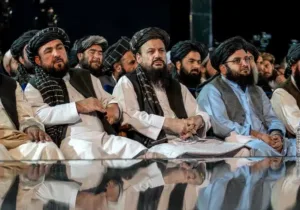In September of 2022, a young Iranian woman named Mahsa Amini died in police custody after being arrested for wearing her hijab incorrectly. This event, among other instances of political repression in Iran, resulted in worldwide protests which left hundreds dead and thousands arrested.
Western news outlets portrayed the protests through the lens of feminism–front page pictures showed women without head coverings demanding that other Muslim women join them. This Western influence has resulted in many believing that a solution lies in Tehran looking more like New York City. And while many Iranians are protesting for gender equality, the long history of Iranian resistance to the Islamic regime shows a deeper fight against government oppression and for religious freedom.
In 1978, Iranians began to protest the Shah’s Western agenda and failed economic policies. The protests became increasingly violent and the Iranian Revolution was ignited, culminating in the Shah’s overthrow and the rise of the current regime. This new government codified and heavily enforced Islamic Moral Law, creating “guidance patrols” which became widely known as the “morality police.” Members of these patrols arrested Amini. The protests of 2022 are not a new wave of Western feminism in Iran, but rather echoes of a decades-long fight for freedom from governmental oppression.
Iran is, compared to the United States, a very conservative country; even the most secular Iranian is religious compared to a citizen in a non-religious state. Iran should not be compelled to adopt a secular, Western-style government because that would not be representative of the people. But not every Iranian Muslim agrees on how to worship and live as a Muslim. The protests are not necessarily over Islamic law or its codification, but rather its enforcement. The Quran states that a woman should wear a hijab but does not dictate any punishment for choosing to not wear one. Even in an Islamic state, women could wear a hijab or not, without fear of government retribution.
The protests also show how the government is an enforcer of Islamic tradition rather than a merely Quranic regime. There are several ways in which Iran contradicts the Quran or inserts their own interpretation. For example, by punishing women for immodesty, imprisoning Christians, Baha’is, Sunni Muslims, and Jews, destroying structures of other religions, the practice of ‘honor killings’, and more.
In December 2022, Iran dissolved their patrols, giving in to pressure from the protests. Foreign governments largely took this as a sign of success and global media turned their attention away. But as of July 16, 2023, the morality police have been reinstated, showing that the situation has not truly improved. Iran has long been seen as a “lost cause” by the Western world; as a place where human rights go to die and wars abound. And, while it is unlikely that Iran’s government will bend to these or any other protests, it is possible for even a theocratic government to respect religious freedom.
Many Islamic scholars have argued that an Islamic state can promote religious freedom while still holding to the principles of the Quran. Yousef Saanei was one such scholar who served as the Attorney General of Iran from 1983 to 1985. In his book, The Essence of Thoughts, he wrote about his vision of a “Theo-democracy”, a government that is formed on the basis of Islamic thought, but which also respects the beliefs of all. Another prominent Islamic legal scholar, Khaled Abou El Fadl, was appointed to the US Commission on International Religious Freedom in 2003. He wrote The Place of Tolerance in Islam to argue that the Quran teaches acceptance and to explore how Islamic political contexts should advance freedom of belief.
Iran’s public reinstatement of guidance patrols sent a message that Iran cannot be controlled by the West and will not abide by Western ethics and values. The US has a vested interest in supporting a safe and non-oppressive Iran for both geo-political and nuclear reasons. That will not be achieved by holding the Iranian government to a Western standard of feminism, but rather by pushing Iran to adopt values of religious liberty. US Foreign Policy should not be focused on changing Iranian culture but rather should promote basic human rights globally. The right to believe what you want is not an Eastern or Western idea. Iran can uphold religious freedom and still be a country based on Islamic and Eastern values and traditions.
The US and its allies ought to continue to work for change in Iran, but not solely through economic sanctions and diplomatic shows. If the US is serious about helping the protestors and decreasing human rights abuses, it must consult with non-Western, Islamic scholars about how to integrate religious freedom into a theocratic society. America’s first priority remains preventing the development of an Iranian nuclear weapon. But there also should be a discussion around how to promote religious freedom in the region, both for Iranian women and persecuted minorities but also, pragmatically, because it will tilt Iran more favorably towards the West.






 Sponsor a student for Christianity & National Security 2024
Sponsor a student for Christianity & National Security 2024